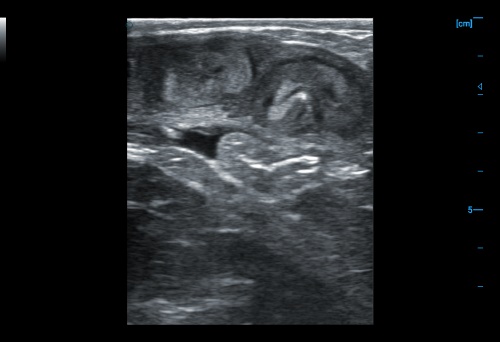El ultrasonido ha revolucionado la forma en que los veterinarios y los profesionales del ganado manejan la salud del rebaño, especialmente en medicina bovina. From reproductive assessments to soft tissue evaluation, ultrasound offers non-invasive, accurate, and efficient diagnostics—right on the farm. Sin embargo, with the abundance of ultrasound systems available today, selecting the right equipment for bovine care can be overwhelming. This guide aims to simplify your decision-making process by outlining the essential features and practical considerations that matter most for bovine ultrasound.

Why Ultrasound Matters in Bovine Medicine
Bovine ultrasound is an indispensable tool for herd health and reproductive management. In the context of commercial cattle production, rapid pregnancy diagnosis, early detection of reproductive pathologies, and monitoring of ovarian activity are crucial for optimizing productivity. Portable ultrasound systems enable veterinarians and livestock technicians to make timely, evidence-based decisions in the field, reducing downtime and reproductive losses.
As demand increases for more efficient reproductive protocols—such as fixed-time artificial insemination (FTAI) and embryo transfer (ET)—the need for fast, fidedigno, and field-ready imaging systems is greater than ever.
Key Factors When Choosing a Bovine Ultrasound
El best bovine ultrasound system balances portability, imaging performance, user-friendliness, and durability. Below are the three primary categories you should evaluate before purchasing:
1.Portabilidad: Imaging Wherever the Cows Are
Bovine practitioners frequently work in barns, pasture fields, mobile clinics, or temporary setups with minimal infrastructure. Portability is therefore not a luxury—it’s a necessity.
Important portability features include:
-
Lightweight design: The total weight of the unit, including probe and battery, should be minimal—ideally under 2 kg—allowing for single-handed operation if necessary.
-
Battery-powered functionality: A long-lasting battery (4–6 hours minimum) is essential for full-day use in remote locations. Rapid-charging capability is also a plus.
-
Compact dimensions: The system should easily fit into a small transport case or backpack, enabling fast relocation between sites.
-
Rugged carry case: Dust-proof, impermeable, and shock-resistant bags help preserve the device’s lifespan, especially under harsh environmental conditions.
-
Wearable accessories: Shoulder straps, waist-mounted holsters, or wrist-mounted screens can dramatically improve workflow efficiency and ergonomics.
2.Ultrasound System Specifications: Built for Bovine Anatomy
Cattle-specific ultrasonography comes with its own technical challenges. Bovine ovaries are small and located deep within the pelvic cavity. Fetal imaging often requires clear contrast and high penetration. Por lo tanto, your system should be optimized for these tasks.
Here are the features that matter most:
-
Preset bovine reproductive software: The presence of preloaded presets optimized for cattle improves image quality and reduces the need for manual adjustment.
-
High-resolution LED screen: A sunlight-readable, glare-resistant screen is ideal for outdoor settings. Color Doppler is optional but useful for vascular assessment.
-
Fast image capture and storage: Onboard memory or SD card support allows users to record and retrieve hundreds of scans. The ability to export images via USB or wireless is beneficial for recordkeeping.
-
Adjustable gain and focus settings: To fine-tune image contrast, especially when differentiating small reproductive structures.
-
Multiple imaging modes: B-mode for real-time imaging, M-mode for motion analysis, and freeze-frame functions for still captures.
-
32-channel advanced processor: A more powerful chipset enhances image rendering speed and resolution, especially for complex pelvic or fetal structures.
3.Selecting the Right Probe: Where Diagnosis Begins
The probe, or transducer, is arguably the most critical component of any ultrasound system. In bovine practice, rectal linear probes are most commonly used for reproductive evaluations. Selecting the right probe ensures more accurate diagnoses, easier handling, and less discomfort for the animal.
What to look for in a bovine ultrasound probe:
-
Rectal linear probe with long cable: A probe cable of at least 1.8 meters allows free movement and flexibility during rectal scanning.
-
Wide frequency range: Probes with adjustable frequencies between 4–14 MHz enable users to switch between deeper penetration and higher image resolution, depending on the structure being examined.
-
Large aperture lens: This provides a broader field of view, which is especially helpful for imaging the uterus or fetal parts in late gestation.
-
128-element array: More elements yield better image clarity and reduced noise, particularly in challenging diagnostic scenarios.
-
Water- and alcohol-resistant construction: Since the probe is repeatedly disinfected and used in moist environments, it should be robust and chemically tolerant.

Clinical Applications in the Field
The true measure of a bovine ultrasound system lies in its real-world use. Some of the most common and impactful applications include:
-
Diagnóstico precoz del embarazo: Detecting pregnancy as early as 28–30 days post-insemination allows for faster rebreeding decisions and tighter calving intervals.
-
Twin detection: Differentiating single from multiple embryos prevents complications later in gestation and enables better nutritional planning.
-
Reproductive tract assessment: Identify ovarian cysts, Infecciones uterinas, or anestrus conditions in cycling and postpartum cows.
-
Fetal aging and sexing: Determining gestational age and fetal gender supports herd management decisions, especially in high-value breeding programs.
-
Embryo transfer monitoring: Evaluate corpus luteum development and uterine readiness in donor and recipient cows.
Advanced Features Worth Considering
While basic functionality is often sufficient for many practitioners, those working in high-volume operations or research may benefit from additional features:
-
Voice-activated control: Useful when hands are occupied or gloved during scanning.
-
Cloud-based data storage: Enables remote collaboration and long-term recordkeeping.
-
Tele-ultrasound compatibility: Real-time sharing of scans for second opinions or expert review.
-
Integrated reproductive software: Synchronizes ultrasound results with herd management systems, improving decision-making efficiency.

Maintenance and Support
Choosing a high-quality system also involves considering the manufacturer’s service reliability. Here’s what you should expect:
-
Technical training and tutorials: Online or in-person guidance to get new users up to speed quickly.
-
Extended warranty: A minimum one-year warranty with options for extension ensures peace of mind.
-
Field repairability: Systems with modular components allow easier repairs or replacements on site.
-
Access to replacement parts: Sondas, cables, Baterías, and chargers should be easily available when needed.
Conclusión: Confidence Through Preparation
Selecting the ideal bovine ultrasound system requires balancing multiple factors—mobility, technical specifications, probe selection, and clinical utility. By focusing on features that align with your daily workflow and herd health goals, you can improve diagnostic accuracy, reduce operational delays, and ultimately elevate your cattle production outcomes.
Whether you’re scanning a few cows per week or managing thousands of head across multiple locations, the right ultrasound system becomes an extension of your clinical skills. Investing in the right technology today will provide years of value through better reproductive success, disease detection, and operational efficiency.
Resources & References:
-
Fricke, P. M. (2002). Scanning the future—Ultrasound as a reproductive management tool for dairy cattle. Journal of Dairy Science, 85(8), 1918-1926. https://doi.org/10.3168/jds.S0022-0302(02)74265-8
-
Lucy, M. C. (2001). Reproductive loss in high-producing dairy cattle: where will it end? Journal of Dairy Science, 84(6), 1277–1293. https://doi.org/10.3168/jds.S0022-0302(01)70158-0
-
Ginther, O. J. (1995). Ultrasonic imaging and animal reproduction: Fundamentals. Equiservices Pub
-
Romano, J. E. (2011). Ultrasound for pregnancy diagnosis and monitoring in cattle. Theriogenology, 75(10), 1644–1655. https://doi.org/10.1016/j.theriogenology.2010.11.034
-
López-Gatius, F. (2012). Ultrasound and hormonal tests for early pregnancy diagnosis in dairy cattle. Reproduction in Domestic Animals, 47, 42–47. https://doi.org/10.1111/j.1439-0531.2011.01953.x